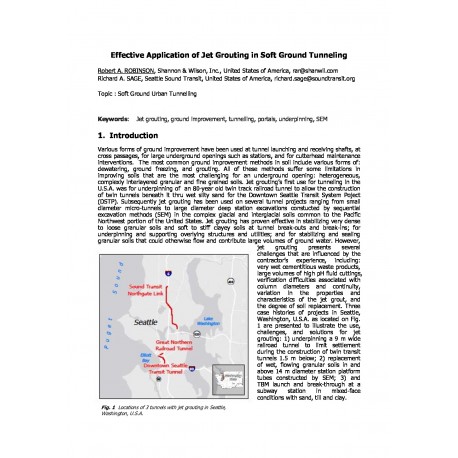Cart
0
0
No document
0,00 €
Total
Document successfully added to your shopping cart
Quantity
Total
There are 0 items in your cart.
There is 1 item in your cart.
Total documents
Total shipping
To be determined
Total
Search & filter
Search for a publication
Search & filter
Viewed documents

Effective Application of Jet Grouting in Soft Ground Tunneling
wtc2015-2019jetgrouting__rev1
Various forms of ground improvement have been used at tunnel launching and receiving shafts, at cross passages, for large underground openings such as stations, and for cutterhead maintenance interventions. The most common ground improvement methods in soil include various forms of: dewatering, ground freezing, and grouting. All of these methods suffer some limitations in improving soils that are the most challenging for an underground opening: heterogeneous, complexly interlayered granular and fine grained soils. Jet grouting’s first use for tunneling in the U.S.A. was for underpinning of an 80-year old twin track railroad tunnel to allow the construction of twin tunnels beneath it thru wet silty sand for the Downtown Seattle Transit System Poject (DSTP). Subsequently jet grouting has been used on several tunnel projects ranging from small diameter micro-tunnels to large diameter deep station excavations constucted by sequential excavation methods (SEM) in the complex glacial and interglacial soils common to the Pacific Northwest portion of the United States. Jet grouting has proven effective in stabilizing very dense to loose granular soils and soft to stiff clayey soils at tunnel break-outs and break-ins; for underpinning and supporting overlying structures and utilities; and for stabilizing and sealing granular soils that could otherwise flow and contribute large volumes of ground water.


